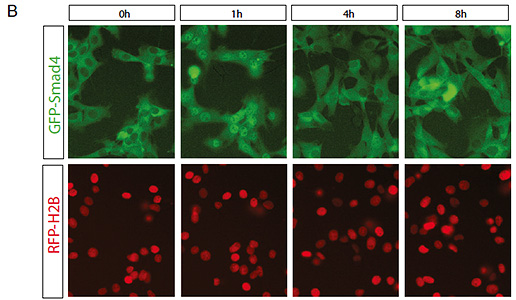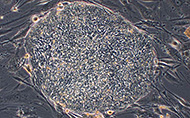Dynamics of TGF-β signaling reveal adaptive and pulsatile behaviors reflected in the nuclear localization of transcription factor Smad4

The TGF-β pathway plays a vital role in development and disease and regulates transcription through a complex composed of re- ceptor-regulated Smads (R-Smads) and Smad4. Extensive biochem- ical and genetic studies argue that the pathway is activated through R-Smad phosphorylation; however, the dynamics of sig- naling remain largely unexplored. We monitored signaling and transcriptional dynamics and found that although R-Smads stably translocate to the nucleus under continuous pathway stimulation, transcription of direct targets is transient. Surprisingly, Smad4 nu- clear localization is confined to short pulses that coincide with transcriptional activity. Upon perturbation, the dynamics of tran- scription correlate with Smad4 nuclear localization rather than with R-Smad activity. In Xenopus embryos, Smad4 shows stereo- typed, uncorrelated bursts of nuclear localization, but activated R- Smads are uniform. Thus, R-Smads relay graded information about ligand levels that is integrated with intrinsic temporal control reflected in Smad4 into the active signaling complex.




